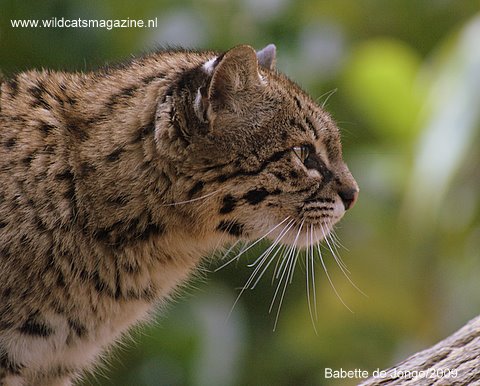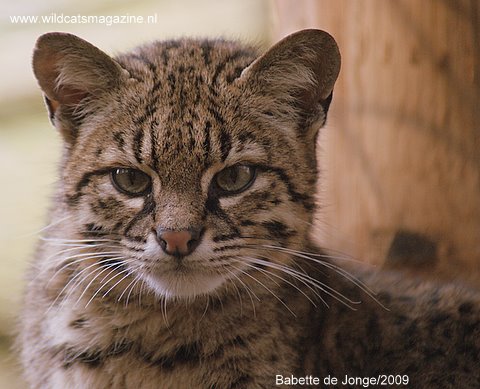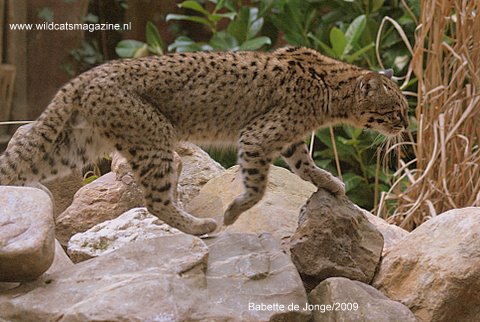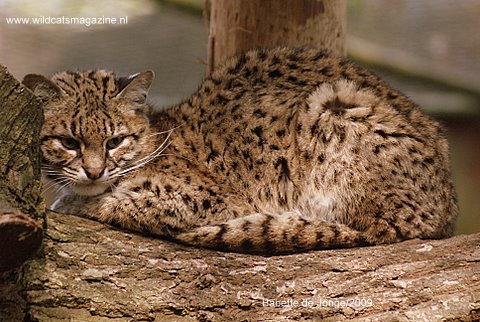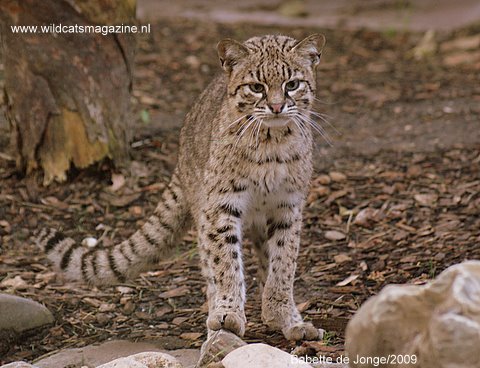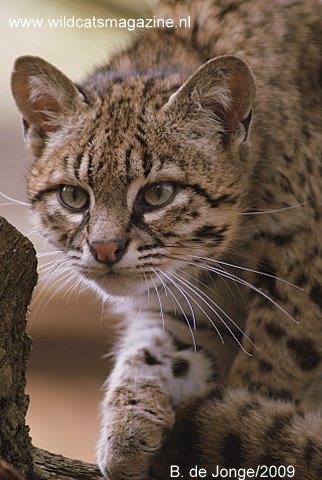
Geoffroy’s Cat (Leopardus geoffroyi) is probably the most common wild cat in South America. Although it appears to be plentiful, some conservationists are concerned because Geoffroy’s Cat is hunted extensively for its pelt. The conservation status is near threatened.
Geoffroy’s Cat is about the size of a domestic cat. Its fur has black spots, but the background color varies from region to region; in the north, a brownish yellow coat is most common. Farther south, the coat is grayish. Melanism is quite common both in the wild and in captivity. They primarily prey on rodents, small lizards, insects, and occasionally frogs and fish; it is at the top of the food chain. There have been attempts to breed this cat with domestic cats, but with very little success. Lots of domestic cats were killed in these attempts.
The Geoffroy’s Cat is named after the 19th century French zoologist étienne Geoffroy Saint-Hilaire who identified Geoffroy’s Cat as a different species when he studied his work as a professor of zoology in Paris, France. The species inhabits the Andes, Pampas (scrubby forest parts), and Gran Chaco landscape.
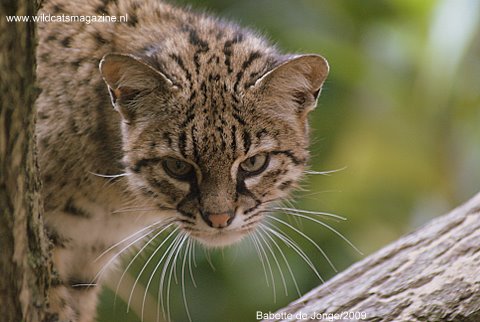
Geoffroy’s Cat is about 60 cm (24 in) long, 31 cm (12 in) tall and weighs only about 2-4 kg (4-9 lb), though individuals up to 8 kg (18 lb) have been reported. Pregnant females appear to take extra care in choosing where they give birth to their kittens. Geoffroy’s Cat kittens develop very quickly and at about 6 weeks they are fully mobile.
